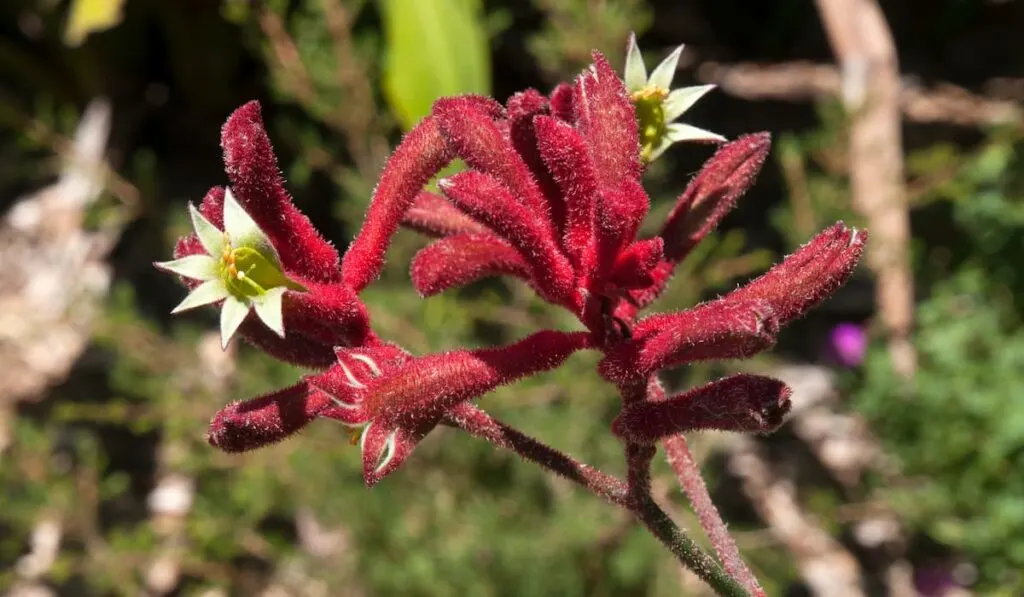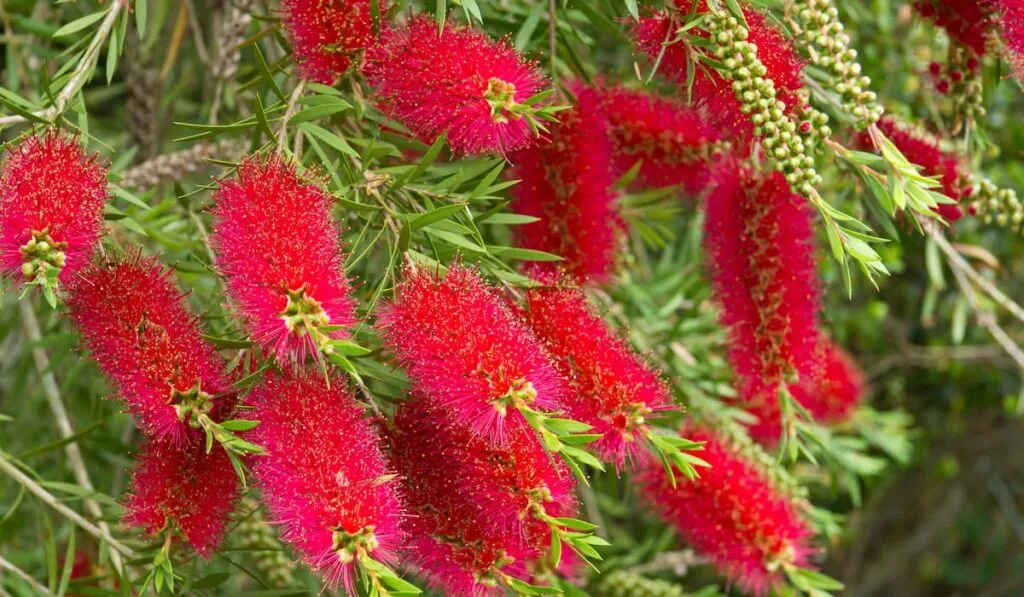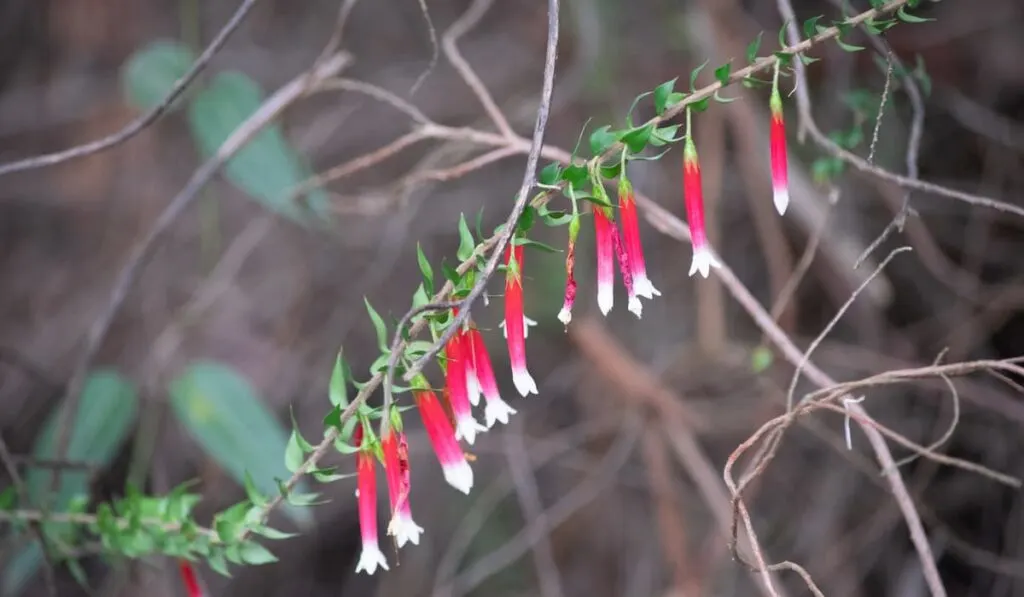People love to cultivate flowering plants because of the splash and beauty they bring to the environment when they bloom. Australian native flowers, to be specific, have bright, vibrant flowers that look beautiful in any bouquet setting, whether you need to add color to your bridal bouquet or you’re looking for a splash of nature for your kitchen counter.
The nicest thing about these native flowers is that they save the gardener’s time and effort because they require little to no maintenance. We’ve compiled for you a list of 13 beautiful flowers native to Australia.
Table of Contents
1. Grevillea

Also called spider flowers, grevilleas are native petal-less wildflowers growing all over Australia. They are distinguished by the pink coils in the flowers. Since they have a bright color, they are a favorite for insects and birds, especially honeyeaters.
These flowers grow in a range of sizes from groundcovers to mid-sized shrubs to tall screening plants, making them most ideal for privacy screens. They are easy to grow and are exceptionally hardy.
After planting, you might need to water them for the first 6 weeks to enable them to establish in the ground, but they require little water once established. They also require partial shade to full sunlight exposure in dry and well-drained soil. The plants need light pruning during the warmer months to maintain their shape and size.
2. Kangaroo Paw (Anigozanthos)

The kangaroo paw is an exceptionally incredible plant. It is a low-maintenance plant and evergreen when it is not yet blooming, and gradually becomes a high-impact plant when it blooms because of the stunning blooms.
Kangaroo paws have leaf-less stalks, strap-like leaves, and a furry texture with tubular flowers that can be single, bi-colored, or even tri-colored, often with blended hues of red, orange, yellow, green, pink, and a near-white color.
They thrive in slightly acidic soils with excellent drainage systems and partial to full sun exposure. They are best used as accents in neutral-colored floral bouquets, or as ornamental plants in gardens.
3. Pink Rock Lily (Dendrobium)

The pink rock lily plant is a species in the orchid family, and is also called the “pink rock orchid”. They have flowers that are either single or range in multiple numbers up to twelve scented blooms evenly spaced on a single spike, with each flower growing up to 25 mm in size.
The flowers bloom in either a pure white, pink, or deep purple, making them one of the most popular and sought-after flowers, both locally and internationally.
They are best used as ornamental plants in gardens since they are hardy and easy to maintain. For best results, feed them weekly with one-quarter strength fertilizer.
Ideally, the blooms occur from August through December. These flowers will do best in a vase if they are kept out of direct sun. Think of them as a shade plant once they are cut.
4. Bottle-brushes (Callistemon)

This flower is so named because it looks like a the brush of a bottle cleaner. Bottle-brush trees can grow to various sizes and shapes, making them suitable for just about any garden.
The elegant blooms start emerging from early spring, attracting several birds and pollinators such as bees.
Bottle-brushes are hardy plants that can even thrive in damp conditions, provided they are already firmly established in the ground.
You may also need to prune the tips while they are young to promote dense growth and grow them where they get partial shade to full sunlight exposure.
You will only need to feed it twice a year, preferably during spring and autumn, with a slow-release fertilizer for optimal growth.
5. Canberra Bells

Besides their distinct bell-shaped blooms, Canberra bells have a two-toned color combination of red and cream, making them easily distinguishable. Adding to their bright blooms, they have sweet nectar, making them a center of attraction for butterflies, birds, bees, and other insects.
Canberra bells bloom heavily from late summer through winter. Since their blooms are tougher than they look, Canberra bells make an excellent addition to gardens and bouquets.
6. Lilly Pilly (Syzygium smithii)

Also known as the Australian cherry, Lilly pillies are popular for their purplish-red edible fruits that are similar to berries. Australian cherry trees are evergreen with characteristically glossy leaves and produce fragrant white blooms in summer before fruiting up with red or purple fruits.
In full bloom, what you will see instead of petals are feathery flowers with thread-like strands, just like dandelions.
For optimal growth, lilly pillies prefer fertile and well-drained soils. Since they grow thick and dense, lilly pillies can be trimmed to best fit the desired function, such as privacy screens.
7. Wattles Acacia (Acacia pycnantha)

This is the official national flower of Australia. They have exceptionally rapid growth and produce elegant yellow flowers from a very young age.
For optimal growth, wattles thrive in partial shade spots to full sunlight exposure. They are not choosy on the type of soil to best grow, but they need well-drained soil. Furthermore, they are hardy and tolerant to extremes of both cold and heat.
However, if your garden often gets heavy winter frosts, it is best to stick to flower species indigenous to your locality for robust growth.
8. Australian Honeysuckles (Banksia)

Banksias are excellent bloomers that can flower for extended periods, often producing flower spikes in hues of red, gold, and orange, giving the flowers a unique visual appeal especially sought after for weddings, parties, and funerals.
They are available in a range of sizes, from spreading ground covers to medium-sized shrubs. Giant candles, for instance, produce large flower spikes on shrubs as tall as 13 feet, while other dwarf varieties like cherry candles only spread for about 6.5 feet.
Banksias thrive in well-drained soil or a native soil mix and they require partial shade to full sunlight exposure. You should occasionally feed them with slow-release fertilizer for native plants.
9. Desert Flame

Distinguished by its yellow-golden floral structures and silver foliage, desert flames are among the most popular Australian native flowers. As suggested by the name, the desert flame is a fiery and brightly colored flower that resembles a small fuzzy button.
Desert flowers thrive in large spaces with plenty of room to grow and will always make a good groundcover in the garden.
To use as cut flowers, cut some desert flame buds off for a bouquet, adding a bright sunny beacon to the flower collection.
10. Egg and Bacon

Distinguished by the elegant wide yellow petals with a dark reddish-brown center, it is quite clear how they got their name. They thrive in well-drained soil with partial to full sunlight exposure required.
They are quite hardy, and only need watering during the first few weeks of growth to root into the ground. Additionally, you may need to apply a slow-release fertilizer annually, especially during spring.
Because of their elegant and bright blooms, egg and bacon flowers can make a graceful addition to a bouquet.
11. Pink Common Heath (Epacris impressa)

Pink common heath plants are generous bloomers that flower all year round, especially during winter. Their flower pigmentation varies from white to pink, to a deep crimson.
The plants can grow up to a 3.5 feet tall, but most only remain as 20-inch garden shrubs.
For optimal growth, pink common heaths thrive in well-drained soil with partial shade or full sun exposure. Additionally, you may need to prune it to maintain the bushy shape.
12. Wax-flower (Crowea exalata)

Waxflowers are popular among gardeners as low-growing groundcovers or compact shrubs. They have star-shaped flowers commonly found in hues of pink and white. The plant has characteristically dainty blooms and purple stems.
Waxflowers often grow between ranges of 8 inches to 5 feet high and can spread out to about 30 inches to 5 feet, making them an excellent option for border plants.
For optimal growth, plant them in well-drained soil at a location receiving partial sunlight. You also need to slightly prune the stems after flowering to maintain the small stature.
13. Chorizema

Also known as the heart-leaf flame pea, chorizemas are cute wildflowers with wide petals that usually come in hues of orange-red or yellow. They thrive in well-drained soils, but the petal colors deepen and get more vivid when cultivated in heavy clay soil.
Not only are chorizemas easy to cultivate and maintain, but are also elegant and attractive to keep, making them good ornamental plants for both the garden and the bouquet.
Conclusion
Australian native flowers make the most colorful addition to any bouquet. For gardeners, these native plants are quite easy to grow and maintain, and they pay accordingly with excellent blooms.
If you are buying the flowers, they are always the best quality and durable, making them the best for bouquets.
Just remember to store them in vases in cool spots away from direct sunlight and heat.
Resources:
- https://www.harwoodslawncare.com.au/australian-native-flowers/
- https://lawn.com.au/a-complete-guide-to-australian-native-flowers/
- https://www.bhg.com.au/australian-native-flowers-a-guide-to-australian-flowers
- https://www.anbg.gov.au/acacia/
- https://www.bunnings.com.au/diy-advice/garden/planting-and-growing/how-to-grow-and-care-for-a-lilly-pilly
- https://nativeplantscbr.com.au/articles/correa-canberra-bells-in-a-pot
- https://www.thespruce.com/kangaroo-paw-flowers-1315764
- https://www.anbg.gov.au/callistemon/
- https://www.anbg.gov.au/gnp/gnp11/chorizema-cordatum.html
- https://www.gardeningwithangus.com.au/epacris-impressa-common-heath/
- https://www.gardeningknowhow.com/ornamental/shrubs/waxflower/chamelaucium-waxflower-care.htm
